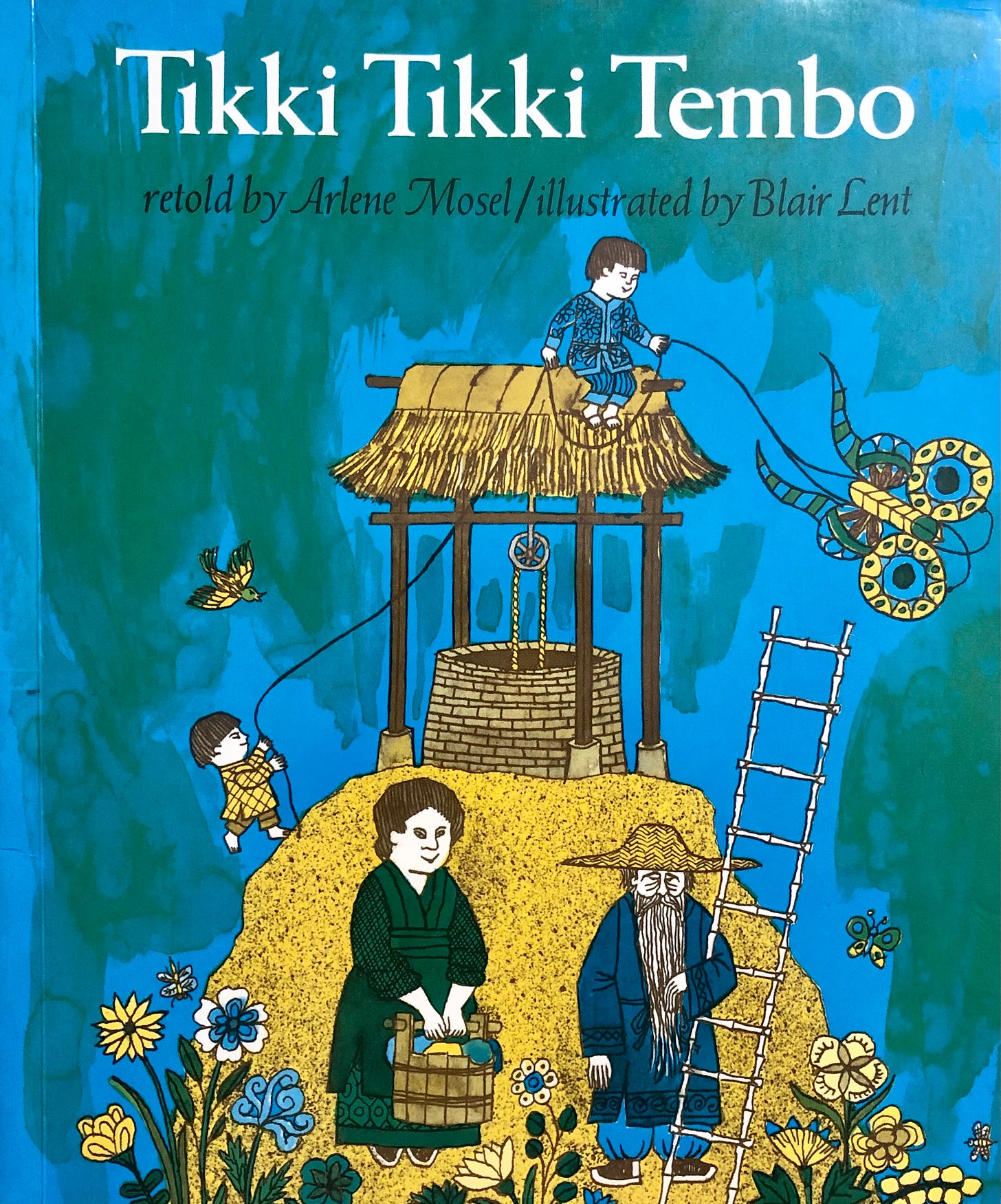“Tikki Tikki Tembo” by Arlene Mosel and illustrated by Blair Lent. Published by Square Fish. A delightful re-telling of an ancient folk tale about why the Chinese thought it wise to give all their children little and short names instead of long and great ones.
Long ago, it was a custom of all parents in China to give long names to their first sons. The subsequent sons were hardly given any names in comparison. The catch was that the long names couldn’t be shortened as it would mean not paying reverence to the person. There lived a mother in a village on the mountain who had two little sons. Her first son was called Tikki tikki tembo-no sa rembo-chari bari ruchi-pip peri pembo which meant “the most wonderful thing in the whole wide world!”. Her second son was called Chang which meant “little or nothing”.
The mother would go daily to a nearby stream to wash clothes. There was an old well nearby. The boys would play around. She would warn them not to go near the well as they could fall in it. Naughty little boys seldom heed to their mother’s advice. They did play near the well and little Chang accidentally fell into it.
What happened next? Would Chang be rescued? Was it of use to have a short name? What was the danger of having a honourable and long name? Why did the Chinese end up changing the trend of keeping such long names? Read the charming book to find out.
My eight year old has loved this book since he was three. I have such fond memories of reading out the book to him and other children in my apartment. All of them enjoyed trying to pronounce the long rhyming name and it was delightful to hear them do that. Most of them were in that 3-5 age group. We had created our own tune to call out Tikki tikki tembo-no sa rembo-chari bari ruchi-pip peri pembo :) This 54 year old classic which was the debut book by the author won the Boston Globe - Horn Book Award in 1968 for picture books. This was one of our first few books from Lightroom Bookstore and came highly recommended by the owner Aashti Mudnani.
Recommended Age
The book is apt for children aged 3/4 and above.





